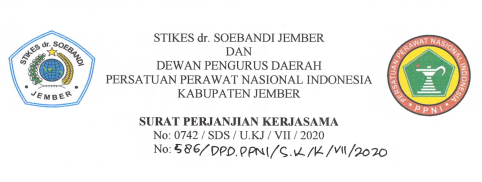DIFFERENCES IN THE STRESS OF ELDERLY BASED ON THE PARTICIPATION OF POSYANDU ELDERLY ACTIVITIES IN THE PATRANG JEMBER PUSKESMAS AREA
Keywords:
Stress level, Eldery, PosyanduAbstract
Stress as all problems or demands for adjustment from the interrupt. In Baratan Village there are 10 elderly people with 30% elderly experiencing mild stress, 10% elderly experiencing moderate stress, and 60% elderly experiencing severe stress. The aim of this research is to find out the Difference between Elderly Stress Levels Based on the Participation of Elderly Posyandu Activities in the Work Area of Patrang Jember Health Center. This type of associative research using cross sectional methods. The research population is 140 elderly. The research sample of 104 elderly people using consecutive sampling techniques. The instrument uses the DASS 42 questionnaire which consists of 20 question items with an unfavorable assessment: 1 = always, 2 = often, 3 = sometimes, 4 = rarely, 5 = never. Favorable: 1 = never, 2 = rarely, 3 = sometimes, 4 = often, 5 = always. Statistical analysis using Spearman-rank corellation with significance level α <0.05. The results showed that almost half of the elderly had mild stress levels of 49 people (47.1%) and none of the elderly had severe stress levels. Nearly half of the elderly have a severe stress level of 38 people (36.5%) and a small proportion of the elderly have a mild stress level of 2 people (1.9%). The results of the Spearman-rank corellation test showed no difference in stress levels of the elderly who participated in and did not attend the posyandu activities of the elderly, with a value of 0.192 (p <0.05). Suggestions for puskesmas can do home care for elderly who do not attend posyandu to prevent high levels of stress, but do not neglect elderly who attend posyandu





